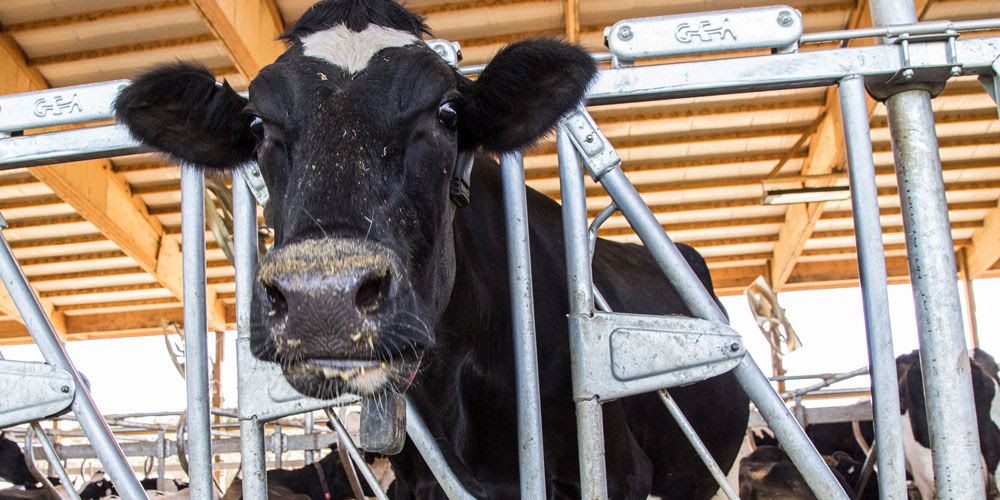
LOCAL
Wisconsin dairy farmers hurt by COVID-19 shutdowns
The coronavirus shutdowns are dealing severe blows to Wisconsin dairy farmers who typically sell large amounts of products to the now-decimated school, restaurant, and hospitality industries.
Approximately one-third of their products, mainly cheese, are sold to the food service trade. A local cooperative, Foremost Farms, asked its members to reduce the amount of milk they are producing because of "the extreme nature of the coronavirus situation and the impact on the economy." They added, “We also need to be prepared for the scenarios that would require our members to dump milk … or dispose of (it) in some other manner."
Farmers report that the outbreak has caused milk prices to drop to unprofitable levels this spring, endangering the upcoming planting season funding.
NATIONAL
U.S. Death toll increases exponentially over weekend
From Friday to Sunday, the death toll from the novel coronavirus (COVID-19) in the United States doubled. Deaths had reached 1,000 for the previous portion of the month, but just over the weekend doubled to over 2,000. The increase is consistent with models (some linked to below) which predict death tolls in the thousands per day in the coming weeks.
Nearly a third of U.S deaths so far are in New York City, but large increases are projected in other regions. Louisiana has confirmed 3,540 cases since March 9 — among the world's fastest-growing infection rates — and may be the next hardest hit area in the U.S. The Mardi Gras and Carnival celebrations at are thought to have been drivers of the drastic increase.
Most leadership grimly accepted the reality of the situation. "It took nearly three weeks for the National Capital Region to go from 0 to 1,000 cases of COVID-19. It took three days for the region to go from 1,000 to 2,000 cases in Washington, D.C., Maryland, and Virginia," Maryland Gov. Larry Hogan said in a statement on Saturday. "This is a rapidly evolving and escalating emergency which is now surrounding the nation's capital."
INTERNATIONAL
Potentially higher number of deaths in China from COVID-19 than reported
Large numbers of urn shipments to the Wuhan region and cremation data are prompting speculation that the death toll from COVID-19 was much higher than the reported 2,535 death from over 50,000 infections.
Cremation numbers released by the Wuhan civil affairs agency report 56,007 cremations in the fourth quarter of 2019, 1,583 higher than the same period in 2018 and 2,231 higher than 2017. The population grew only by 1.1 percent from 2018 to 2019. Thus, even in December, in the early stages of the outbreak, there may have been many associated deaths.
Large numbers of urns are also reportedly being delivered to Wuhan funeral homes. Reports from the peak of the outbreak in February indicated that the crematoriums were running around the clock, and estimates from that reporting and total capacity of Wuhan crematoriums indicate that up to 1,560 people could have been cremated each day, a rate much higher than would be needed for 2,535 additional deaths. In addition, approximately 42,000 urns are estimated to be distributed between March 23 to April 4 during Qing Ming, the traditional tomb-sweeping festival. Subtracting expected death rates of about 16,000, this shows a potential 26,000 deaths in the region.
Much of the evidence remains speculative currently, and some portion of the increase could have occurred from other health issues which were not properly treated as the health system was overwhelmed. Yet many deaths may not have been counted as COVID-19 deaths due to not being tested, and subsequently purposefully left out of official estimates.
There was already skepticism regarding how open China has been about the pandemic response to both its citizens and the international community. In the early stages, Chinese officials attempted to cover up the severity by censoring health care professionals and tightly controlling official news coverage. Residents are still reporting that Chinese officials are discouraging spreading information about the death of loved ones due to the virus. Thus, there is lingering doubt about the official numbers.
“It can't be right... the incinerators have been working round the clock, so how can so few people have died?" one resident told Radio Free Asia.
National Public Radio
COVID-19 Modeling Projections (University of Washington)
Reuters
